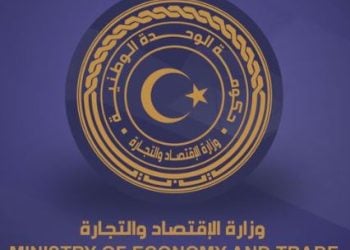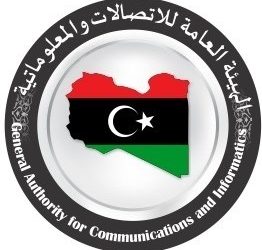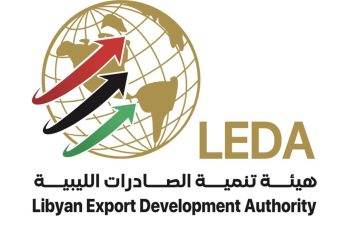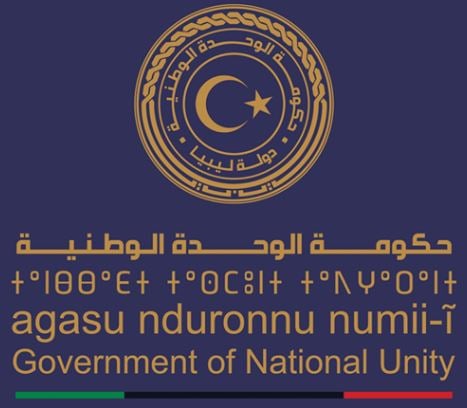The Governor of the Central Bank of Libya (CBL), Nji Issa, issued a statement yesterday hours before announcing a 13.3 percent devaluation of the Libyan dinar.
In summary, the Governor said the expansion of public expenditure by both the Tripoli and Benghazi based governments has exacerbated the rising level of public debt outstanding at the Central Bank of Libya.
This expanded spending has generated an increasing demand for foreign currency, contributing to the widening and imbalance between demand and supply of foreign currencies, and preventing the Central Bank from achieving its goals of maintaining exchange rate stability and increasing the value of the Libyan dinar.
This is likely to lead to several negative economic impacts and pose challenges to the Central Bank, given the limited tools available to contain it. The situation will become more serious if oil production and exports decline due to any changes, or if global oil prices decline. As a result, and in the absence of effective, targeted macroeconomic policies by both competing western and eastern governments, the CBL was forced to devalue the Libyan dinar.
The full statement read as follows:
‘‘While the Central Bank of Libya affirms its full commitment to the tasks assigned to it in accordance with Law No. (1) of 2005 on Banks and its amendments, and within the framework of the Central Bank of Libya’s responsibilities towards the nation and its citizens, and based on the principles of disclosure and transparency, we deemed it necessary to clarify all the facts and challenges facing the bank’s management and the reality of the Libyan economy. This is to provide a comprehensive overview of the facts and clarifications regarding the country’s economic and financial situation, as well as the challenges and obstacles that have hindered the achievement of the desired goals. The most important of these challenges are the following:
- The size of the public bilateral (by both western and eastern governments) spending for the year 2024 amounted to 224 billion dinars, of which 123 billion dinars were the expenditures of the (Tripoli based) Government of National Unity. 42 billion dinars in oil swaps, and approximately 59 billion dinars in the (Benghazi based) Libyan Government’s spending in exchange for oil and tax revenues amounting to 136 billion dinars. This spending generated a demand for foreign currency worth US$ 36 billion, contributing to the widening and imbalance between demand and supply of foreign currencies, and preventing the Central Bank from achieving its goals of maintaining exchange rate stability and increasing the value of the Libyan dinar.
- The expansion of the general dual (government) spending over the past years and through 2024 has led to a significant increase in the money supply, reaching 178.1 billion dinars. This is likely to lead to several negative economic impacts and pose challenges to the Central Bank, given the limited tools available to contain it. This will lead to further demand for foreign currency and continued pressure on the Libyan dinar’s exchange rate against foreign currencies in the parallel market, inflation rates, and the risk of losing confidence in the local currency.
- The weakness of oil export revenues supplied to the Central Bank of Libya, reaching only $18.6 billion in 2024, and foreign exchange expenditures reaching $27 billion, has resulted in a large gap between the demand for foreign exchange and its availability. This makes it difficult for the Central Bank to establish a clear policy for managing the exchange rate due to the increasing demand for foreign exchange and the expansion of the dual public spending.
- Given the continued issuance of spending decisions based on 12/1 appropriations in 2025 by both governments, and the continued expansion of public spending at the same pace as in 2024, reaching 224 billion dinars, the country’s financial and economic situation will worsen, posing new challenges to the bank, increasing demand for foreign exchange, worsening the deficit in the balance of payments and general budget, and growing public debt.
- Data for the first quarter of 2025 clearly demonstrate the continued pace of the dual public spending, deficit financing, and the rising demand for foreign currency, which oil revenues are unable to cover. This is a serious matter. Total foreign currency expenditures for the first quarter amounted to approximately $9.8 billion, including $4.4 billion in credits and transfers, $4.4 billion in merchant cards and personal items, and $1 billion in government expenditures, equivalent to 55 billion dinars. Meanwhile, revenues and royalties paid to the bank amounted to approximately $5.2 billion as of March 27, with a deficit of approximately $4.6 billion in just three months. The situation will become more serious if oil production and exports decline due to any changes, or if global oil prices decline.
- The expansion of public expenditure resulting from the decisions of the Central Bank of Libya in Tripoli and Benghazi has exacerbated the rising level of public debt outstanding at the Central Bank of Libya in Tripoli and Benghazi, currently reaching approximately 270 billion dinars, of which 84 billion dinars are at the Central Bank of Libya in Tripoli and approximately 186 billion dinars in the Central Bank of Libya in Benghazi, and the total debt is expected to exceed 330 billion dinars by the end of 2025. This is a very dangerous and unsustainable indicator, and it will significantly distort macroeconomic indicators.
- To reduce the gap between demand and supply of foreign currency and the balance of payments deficit, the CBL was forced to use a portion of its foreign exchange reserves for a limited period to maintain the exchange rate at acceptable levels, maintain the prices of goods and services, and limit the spiralling inflation rate and the deterioration of citizens’ purchasing power. However, the use of reserves is unsustainable, forcing the CBL to reconsider foreign exchange controls and the exchange rate to contain the repercussions of the uncontrolled public spending and the absence of effective, targeted macroeconomic policies.
- The CBL affirms its full commitment to maintaining foreign assets at levels exceeding $94 billion. Of these, $84 billion are reserves managed by the Central Bank. This is despite the grave challenges and the dangerous environment in which it operates.
- The governmental division within state institutions and ministries has led to incompatible and conflicting measures and decisions between the two governments. The absence of a comprehensive and unified economic vision applied across all Libyan territory has weakened the Central Bank’s role in implementing an effective monetary policy.
- The inability to combat and curb the smuggling of goods and fuel has exacerbated the crisis due to the increased demand for imported goods and fuel and the depletion of foreign currency available to the Central Bank. Furthermore, the phenomenon of increasing numbers of informal migrant workers and illegal immigration, which drains approximately $7 billion annually, has increased the rate of consumption of goods and demand for foreign currency in the parallel market, which has fuelled all illegal activities and the expansion of money laundering and terrorist financing in this market.
Based on the above, the Central Bank of Libya, while fulfilling its legally mandated role and exercising its functions, which aim to achieve financial sustainability, stabilize the general price level, safeguard the banking system, and manage foreign exchange reserves to ensure their preservation, and out of a sense of national responsibility, the Central Bank was compelled to take a series of decisive measures, including a review of the exchange rate to ensure balance across economic sectors, given the absence of any prospects for unifying dual spending between the two governments.
Finally, the Central Bank expresses its full readiness to cooperate with all parties in a transparent manner, and calls on the legislative and executive authorities, as well as all relevant bodies, institutions, and stakeholders, to join forces to end the political and institutional division and develop a short-term economic vision with specific objectives that reflects the current state of the Libyan economy, harmonizes macroeconomic policies, and includes the adoption of a unified budget that sets the general budget at levels that avoid further negative impacts on the Libyan economy and the dinar exchange rate, while taking into account the Libyan economy’s absorptive capacity. The bank also calls on the judicial authorities and the Ministry of Interior to take deterrent measures to curb the phenomenon of smuggling goods and fuel to neighbouring countries and combat the phenomenon of foreign currency speculation on the black market, which has become organized and public”.
.
CBL devalues Libyan dinar by 13.3 percent to LD 5.56 per dollar
CBL’s latest revenues and spending data reveals a dinar surplus but a dollar deficit










